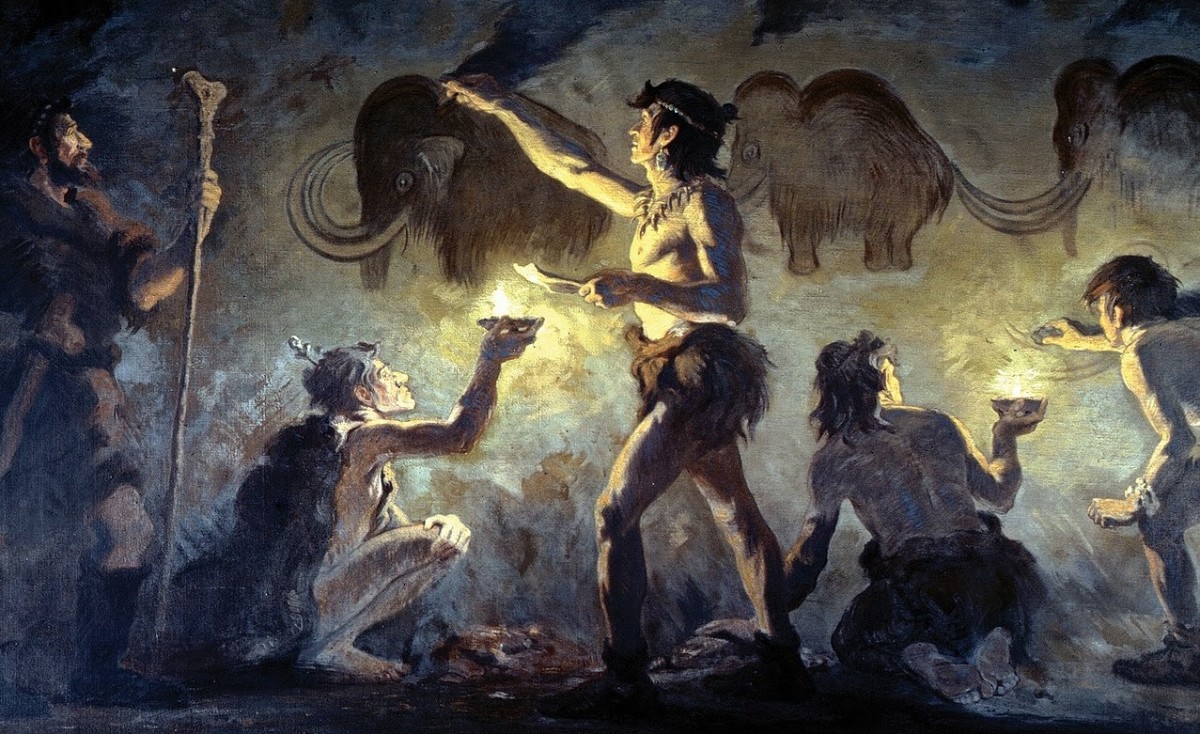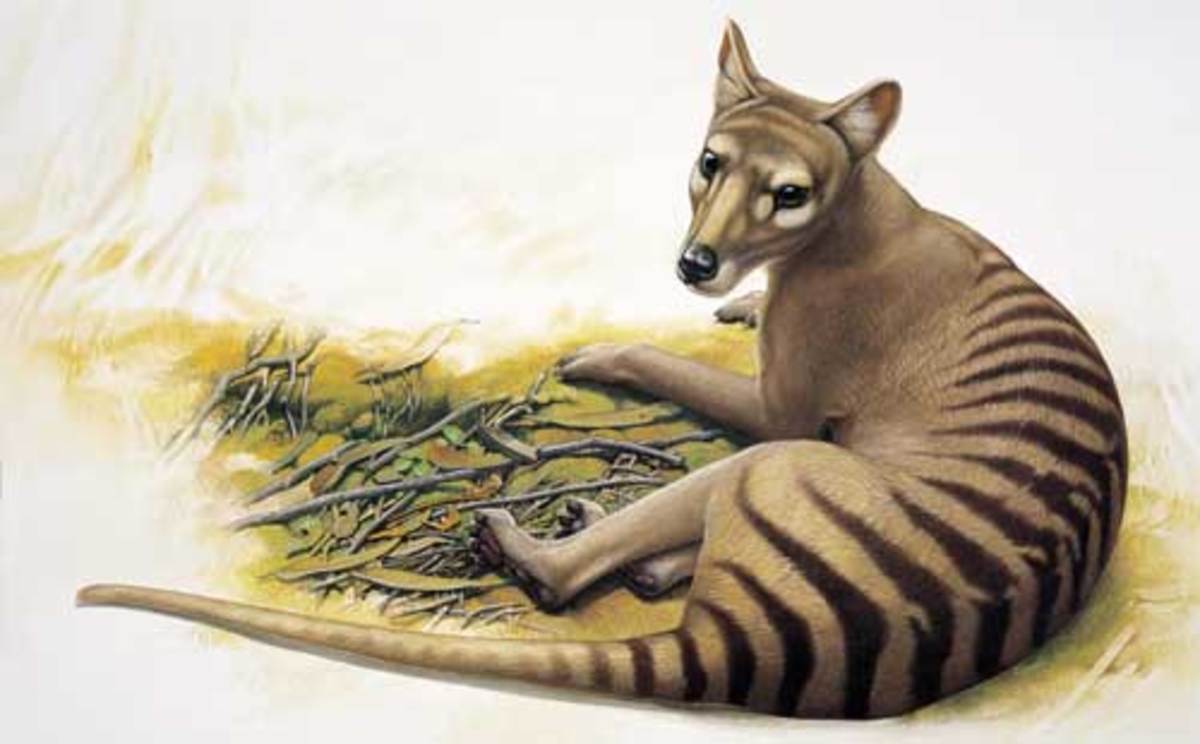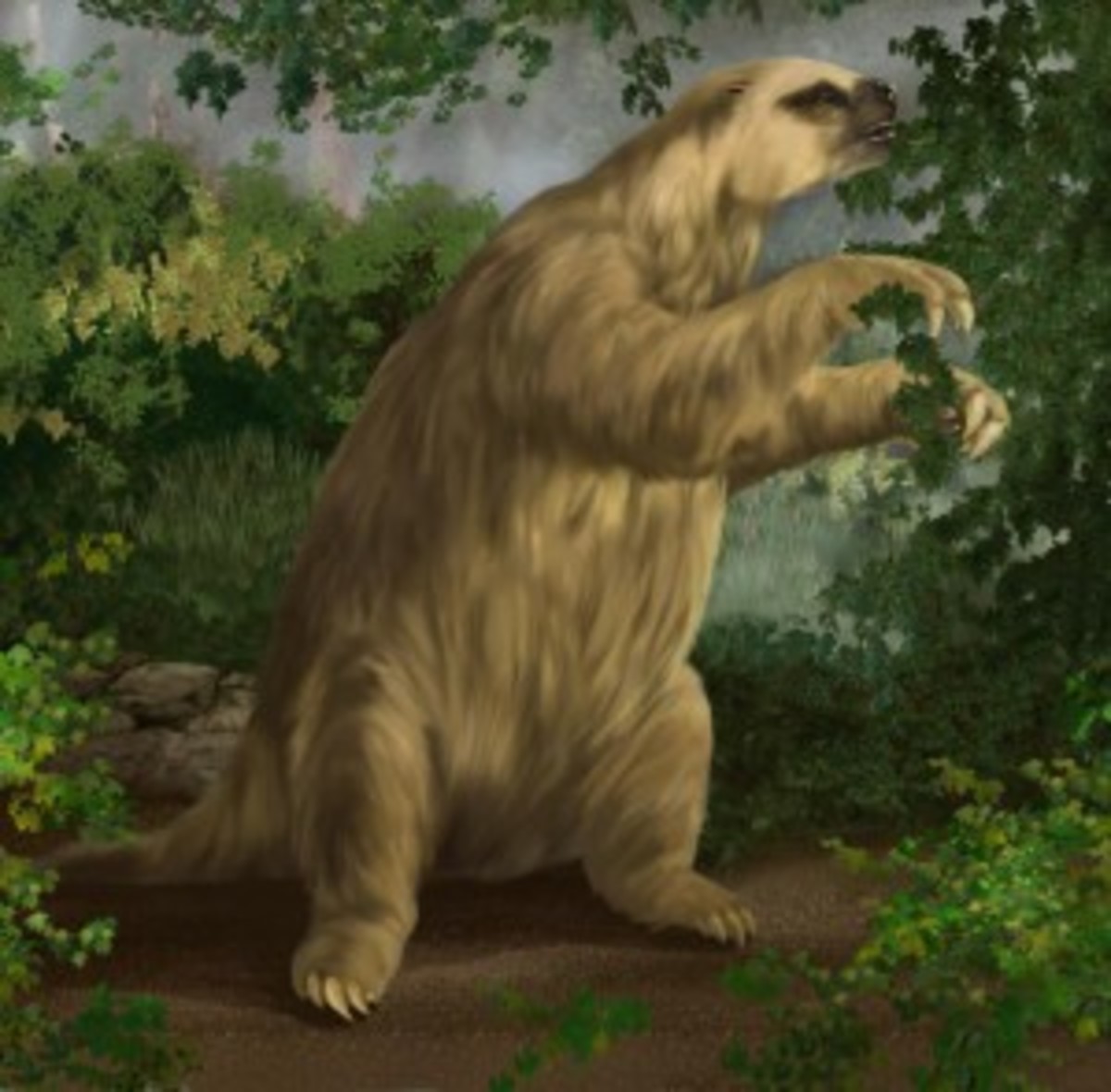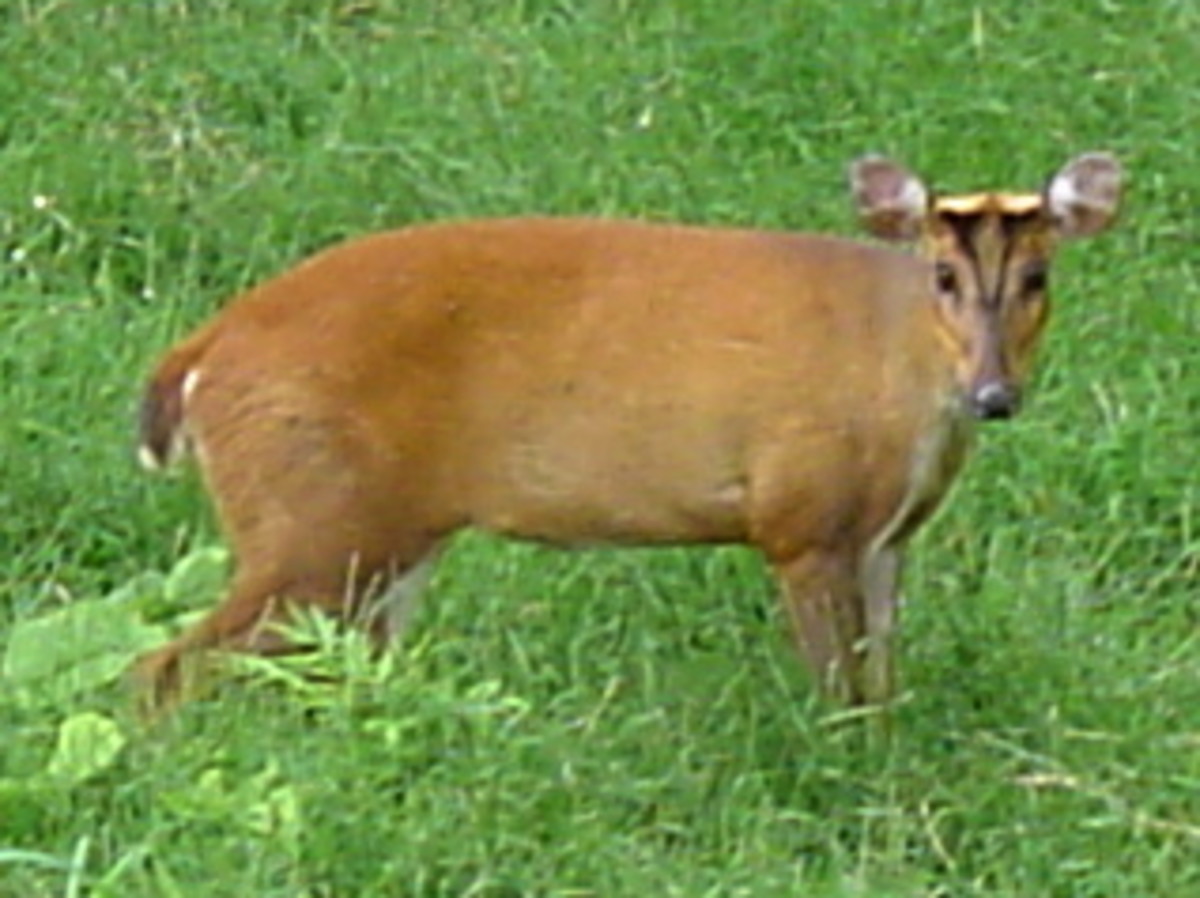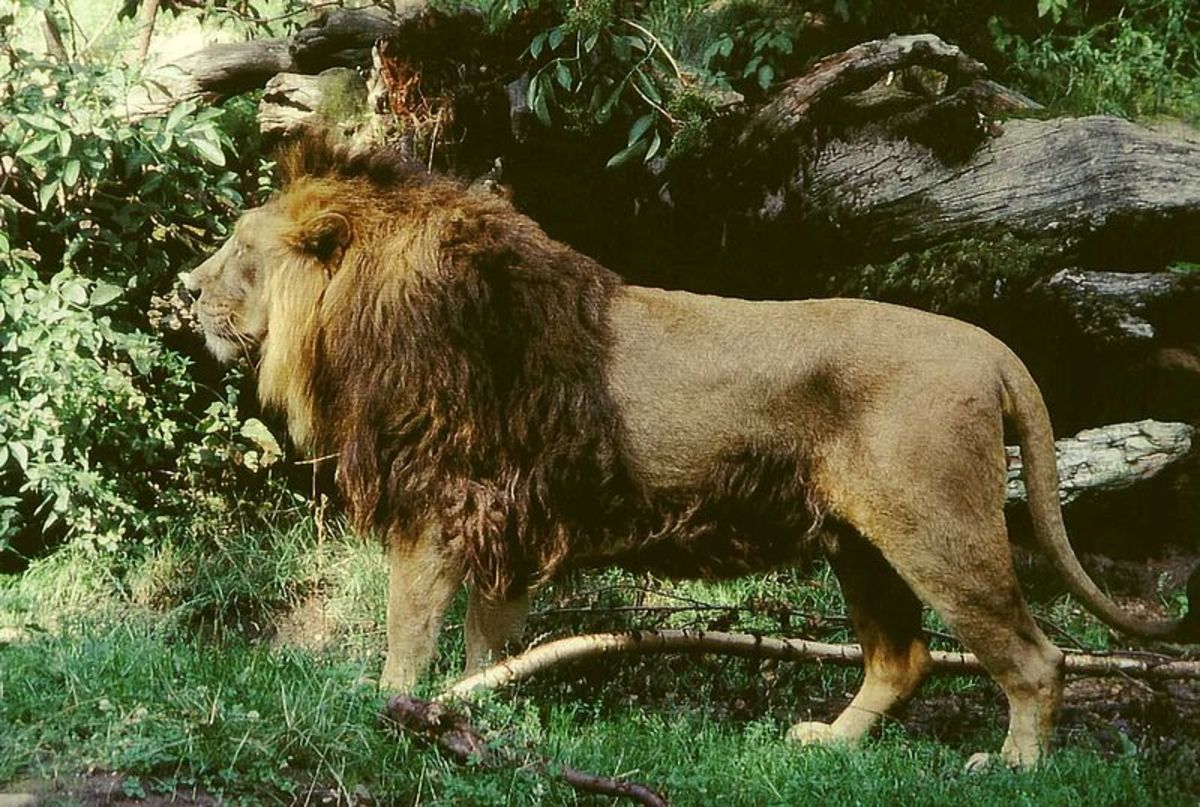Why Species Go Extinct
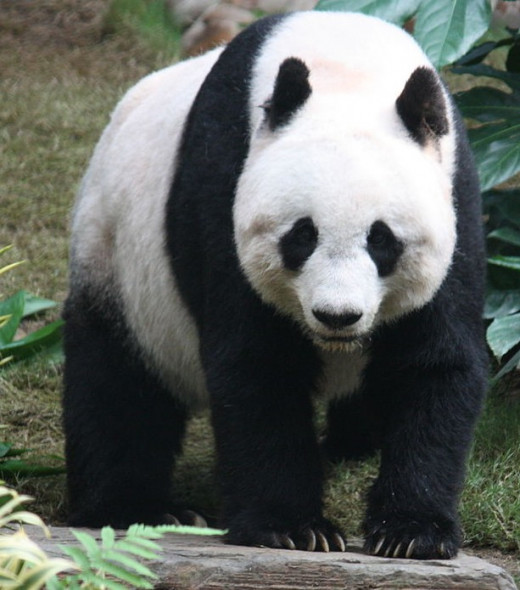
Life on Earth has gone through five major extinctions. The worst extinction occurred 250 million years ago and wiped out over 90% of the Earth's species. The most recent major extinction event is the one that wiped out the dinosaurs.
As humans have spread around the world and developed advanced technology, they have caused numerous species to go extinct and put great pressure on many others. Some folks say we are in the middle of a sixth major extinction. In this article I will go over some of the causes of extinction:
- Subsistence Hunting
- Commercial Hunting
- Habitat Loss
- Loss of Food Sources
Subsistence Hunting
The world was once had many large mammals, often referred to megafauna. In areas where human hunting evolved slowly, the effect of subsistence hunting on local wildlife populations was minimal. Where humans with advanced hunting abilities entered areas with animals that had never been hunted before, they often wiped out the large animals. Before humans arrived, North America had many large animals, such as mammoths, mastodons, ground sloths and numerous others. About 75% of the large animals went extinct as humans populated the Americas.
Other areas of the world also saw extinction of large animal species when humans arrived, even in areas as remote as New Zealand. Polynesians settled the islands around 1300 AD. The only mammals native to New Zealand are bats. The largest land animals were giant flightless birds known as moas. The largest of these weighed around 500 pounds. When humans first arrived, there were nine moa species totaling an estimated 58,000 birds. It is believed that they were hunted to extinction within one hundred years of human arrival.
Today, Africa has more large animal species than any other continent. Since modern humans originated in Africa, their hunting skills improved gradually, and large animals like elephants were able to adapt.
Today, hunting in developed countries is highly regulated to make sure that the numbers of hunted species do not fall too low. Also, money raised through hunting permits is used for wildlife conservation.
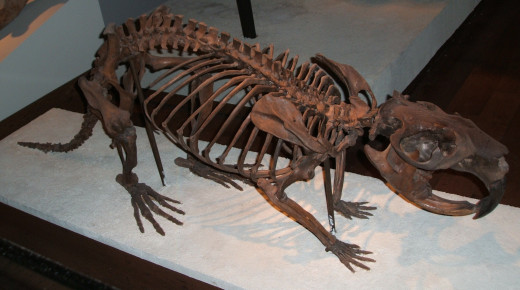
Commercial Hunting
Commercial hunting and trapping are much more damaging to wildlife than subsistence hunting when they go unregulated. Two of the most numerous animals in North America prior to European settlement were the buffalo and the passenger pigeon. Estimates of the pre-columbian buffalo population run as high as one hundred million.
Today, we think of buffalo as an animal of the Great Plains, but it once inhabited much of the eastern United States as well. Indians always hunted buffalo, but they didn't have much effect on their numbers. Early European settlers also hunted buffalo, but the advent of commercial hunting really decimated the herds. They were often hunted for just their hides and tongues (considered the choicest meat). Their bones were later collected and ground up for fertilizer. By the end of the nineteenth century buffalo numbers dropped below one thousand. Around this time some people saw the need to protect this magnificent animal from extinction. Scotty Philip of South Dakota purchased a herd of 74 bison in 1899. When he died twelve years later, the herd had grown to about a thousand animals. Buffalo from his herd were used to start and add to other herds around the United States. The total buffalo populations today is estimated at over 300,000.
Passenger pigeons once numbered in the billions, and it was the most numerous bird in North America. When newly constructed railroads allowed the transport of the birds to eastern markets in the second half of the 1800s, their numbers declined dramatically. Conservation efforts came too late. The Cincinnati Zoo attempted to establish a captive breeding program, but it was unsuccessful. The last one died at the zoo in 1914.
Some species went extinct when they were exploited for purposes other than food. The feather industry initially sought out eider ducks for feathers to use in pillows. Once they had nearly been wiped out in the late eighteenth century, they began using great auk feathers, driving it into extinction. The fur trade has also caused extinctions. The sea mink died out sometime after 1860, before it was even recognized as a distinct species from the American mink. The sea otter population was reduced to less than two thousand animals by 1911. Fortunately, conservation efforts have brought their numbers back, and it now occupies most of its former range. The fur trade was also responsible for the extinction of the Steller's sea cow. It was not hunted for its fur, but for its meat. Subsistence hunting by natives in the northern Paciific had eliminated them from all areas except around the uninhabited Commander Islands. It was discovered in 1741 by an expedition led by Vitus Bering. They were exterminated by 1768 due to fur traders killing them for food. They were very easy to hunt and provided a great deal of tasty meat.
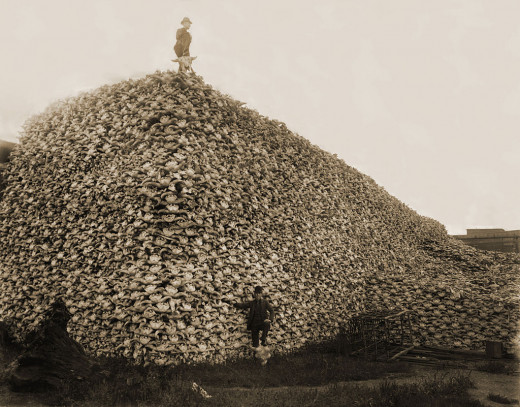
Habitat Loss
Today habitat loss is probably the biggest danger to threatened species. This is especially true of animals that require large territories such as tigers. Female tigers typically have a territory of about 8 square miles. Male tigers have a territory of 20 to 40 square miles. The wild tiger population was about 100,000 in 1900. Today the wild population is somewhere between three and four thousand. There were nine subspecies of tigers in 1900. There are now six subspecies remaining. The Bali, Javan and Caspian subspecies are extinct. The south China subspecies is extinct in the wild, and only 65 animals survive in captivity.
Species that require old growth forests are also threatened by habitat loss. Timber is heavily harvested all over the globe. In the United States, very little old growth forest remains. The spotted owl is threatened because it makes its home in old growth forests. The ivory-billed woodpecker lived in the old growth forests in the southeastern United States. Its numbers declined dramatically after these forests were harvested for timber after the American Civil War. The last known ivory-billed woodpeckers were seen in a Louisiana old growth forest. After it was clear-cut in the 1940s, there have been no definitive sigthings and the species is believed to be extinct.
Loss of Food Sources
Some animals have become extinct when their food sources disappeared. The Haast's eagle of New Zealand's South Island is the largest eagle that has ever existed. Its main prey were moas. When these were wiped out by the Maori, the Haast's eagle also became extinct.
The black-footed ferret of North America almost suffered a similar fate. It preyed on prairie dogs, which American farmers and ranchers regarded as vermin. When the prairie dog populations plummeted due to poisoning and disease, black-footed ferrets escaped extinction by the narrowest of margins.


